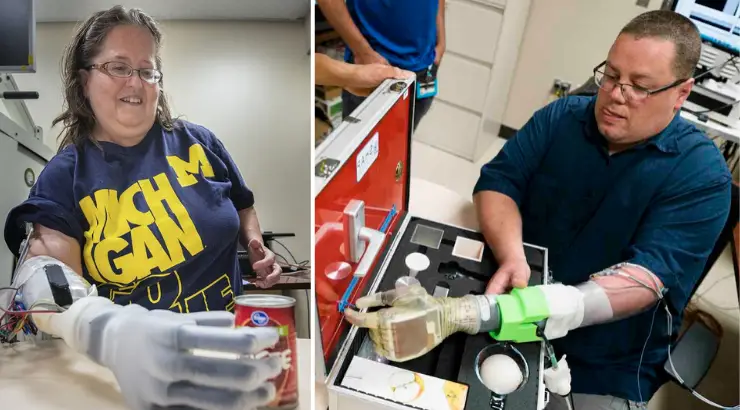Science & Tech
“It’s Like You Have a Hand Again”: Researchers Unveil Revolutionary Mind-Controlled Prosthetic
“This is the biggest advance in motor control for people with amputations in many years.”

(TMU) — Researchers have made a major breakthrough in mind-controlled prosthetics for amputees, allowing small signals from arm nerves to be amplified and turned into real-time finger-level control of a robotic hand that is just as intuitive and quick as a real one.
The development spearheaded by scientists at the University of Michigan signals a major advance in allowing those who are missing their limbs to finally achieve a level of control over prosthetic limbs that comes spectacularly close to the real thing.
Paul Cedena, a professor of biomedical engineering and Robert Oneal Collegiate Professor of Plastic Surgery at the U-M Medical School, said in a statement:
“This is the biggest advance in motor control for people with amputations in many years.
We have developed a technique to provide individual finger control of prosthetic devices using the nerves in a patient’s residual limb. With it, we have been able to provide some of the most advanced prosthetic control that the world has seen.”
The researchers, led by Cederna and U-M College of Engineering associate professor of biomedical engineering Cindy Chestek, developed a method to bring temperamental nerve endings under control, separating thicker nerve bundles into smaller fibers that allowed for greater control before then channeling and amplifying signals that came through those nerves.
Tiny muscle grafts and machine learning algorithms were also used in the approach.
The researchers’ study, published this week in Science Translational Medicine, describes the results of the Mobius Bionics LUKE arm with four participants in the study.
Participants were asked to pick up blocks with a pincer grasp, continuously move their thumb, lift spherically-shaped objects, and play a version of Rock, Paper, Scissors or, in this case, “Rock, Paper, Pliers.”
Study participant Joe Hamilton, who lost his arm in a 2013 fireworks accident, said:
“It’s like you have a hand again.
You can pretty much do anything you can do with a real hand with that hand. It brings you back to a sense of normalcy.”
This revolutionary achievement in mind-controlled prosthetics was also made possible by using the tiny muscle grafts that were wrapped around the nerve endings of participants’ arms, rather than using brain-machine interface technology that goes all the way to the brain—an often high-risk and invasive technique more suitable for paralyzed people.
Chestek explained:
“You can make a prosthetic hand do a lot of things, but that doesn’t mean that the person is intuitively controlling it. The difference is when it works on the first try just by thinking about it, and that’s what our approach offers.
This worked the very first time we tried it. There’s no learning for the participants. All of the learning happens in our algorithms. That’s different from other approaches.”
By Elias Marat | Creative Commons | TheMindUnleashed.com
Typos, corrections and/or news tips? Email us at Contact@TheMindUnleashed.com
